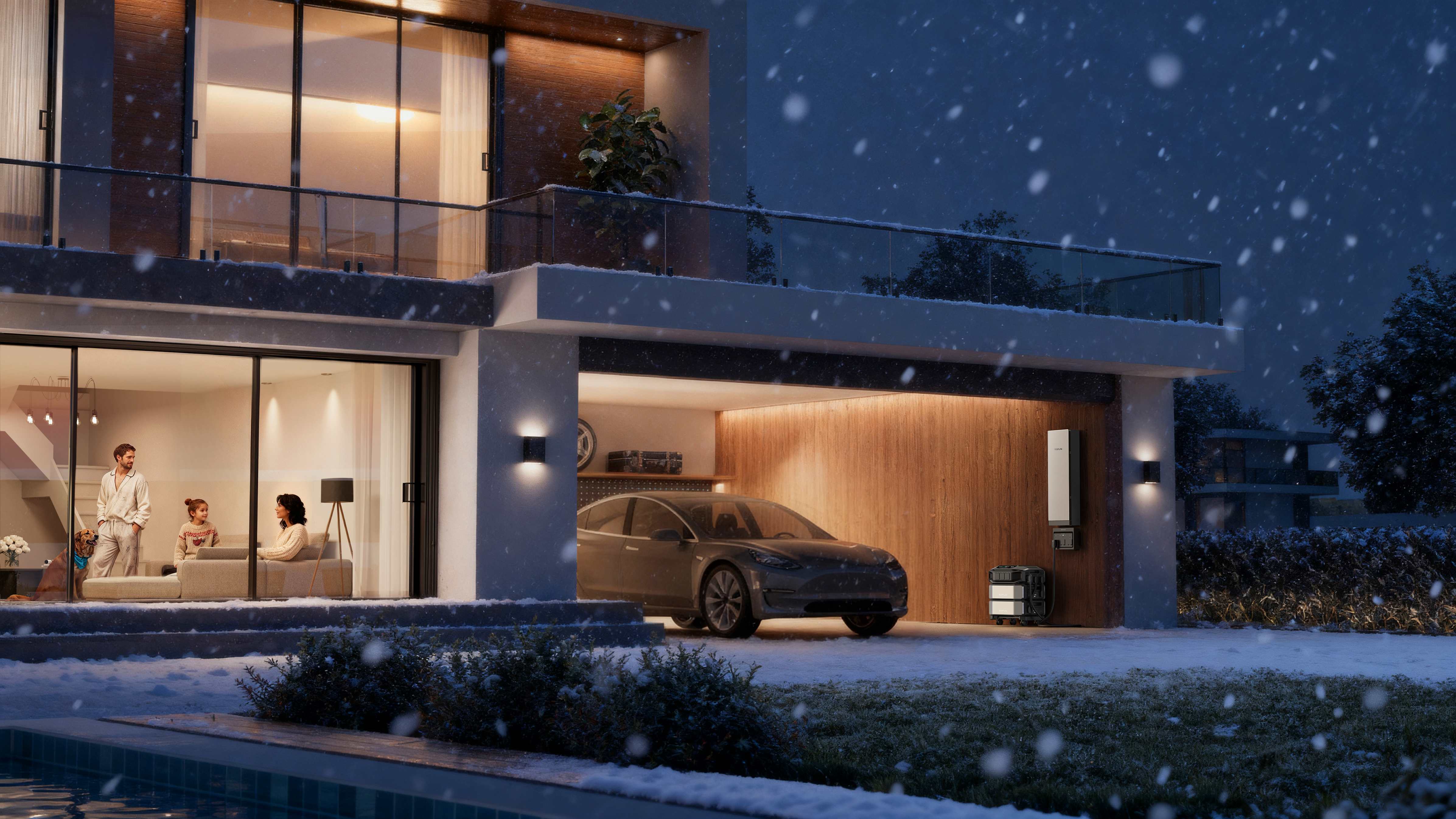Self-Sufficiency vs. Off-Grid: What Are the Differences?
Many people want to reduce their dependence on modern systems. They might do this for environmental reasons, cost savings, or personal freedom. People often confuse "self-sufficiency" with "off-grid living." These terms actually describe two different lifestyles. Each approach has its own benefits and challenges. Let's explore what do self sufficient mean and examine the off grid meaning to understand these differences.
Two Distinct Paths to Independence
The Meaning of Self-Sufficiency
Self-sufficiency means reducing your dependence on outside systems. You still keep connections to public utilities when needed. People who want to know how to be self-sufficient look for ways to produce more at home. They grow food, generate power, and collect rainwater. But they don't cut all ties to the grid.
A self sufficient home works as a hybrid system. Solar panels make electricity during the day. The home stays connected to the grid for backup power. Gardens provide fresh vegetables. Grocery stores remain available when needed. Rainwater supplements city water for watering plants. This flexibility lets homeowners live self sufficiently in ways that work for them.
The Reality of Off-Grid Living
Off grid living means complete disconnection from public utilities. Off grid homes work independently. They rely totally on self-generated power. They use private water sources. They manage their own waste. An off grid house needs careful planning. It requires major investment. Owners must accept certain lifestyle limits.
The off grid meaning goes beyond utilities. It represents total self-reliance. Every system needs a backup. Every problem becomes your responsibility. Weather directly affects daily comfort. Bad weather might mean no power. This lifestyle needs technical skills. It also requires mental readiness for complete independence.
Energy Independence: Two Different Approaches
Grid-Tied Solar for Self-Sufficient Houses
A self sufficient house usually uses grid-tied solar systems. These systems offer benefits from both worlds. Solar panels make power during sunny times. Extra electricity goes back to the grid for credits. The home draws grid power when solar production drops. This method removes the need for expensive batteries. Homeowners still reduce electricity bills by 50-80%.
Modern battery systems show how technology helps gradual independence. The Delta Pro Ultra X offers expandable storage from 6kWh to 60kWh per unit. It provides 12kW power output. These systems let self sufficient homes store solar energy. Homeowners use this stored power during expensive peak hours. They keep grid backup for emergencies. This setup brings major savings without disconnection risks.
The money benefits are clear. Homeowners can start small. They can expand slowly over time. First investments might include a small solar array. The system grows as budgets allow. Battery storage remains optional, not required. Installation costs stay reasonable. Existing electrical systems stay in place.
Complete Energy Autonomy in Off-Grid Homes
Off-grid homes need different ways to get power. The capacity of the solar panels should be sufficient to manage the most adverse conditions. Batteries need to be able to hold power for several cloudy days. During long weather events, backup engines are a must. Usually, the initial cost is more than $30,000. This only talks about the most basic, reliable method.
The complexity of a system grows quickly. Off-grid homes pay close attention to the health of their batteries. They carefully handle power loads. They plan how much energy to use based on what the weather says. Powerful tools need to be used at the right time. The air conditioning might only work when it's very hot outside. Charging electric cars needs to be planned out ahead of time.
Maintenance is always going on. Batteries run out of power over time. Every 7 to 15 years, they need to be changed. Solar panels need to be cleaned often. Generators need a place to store fuel. They also need service on a daily basis. It gets so that technical know-how is just as important as money.
Water and Waste Management Systems
Supplemental Systems vs. Complete Replacement
Self-sufficient homes improve existing infrastructure rather than replace it. Rainwater systems water gardens and flush toilets. City water stays available for drinking. Greywater recycling cuts water use. It doesn't need complex treatment systems. Composting handles food waste. Regular trash service continues.
This method reduces risk and increases sustainability. A 1,000-square-foot roof collects 30,000 gallons yearly in average rainfall areas. This provides plenty of water for landscaping. Simple filters and diverters keep costs low. Systems stay easy to maintain. City water backup prevents problems during droughts. It also helps when systems fail.
Independent Water and Waste Infrastructure
Off grid living requires complete water and waste independence. Wells or springs provide main water supply. These need pumps and pressure tanks. They also need treatment systems. Rainwater becomes critical. Storage tanks often hold 5,000+ gallons. The water needs serious purification for drinking.
Septic systems handle wastewater. They need proper sizing and regular pumping. Owners must use them carefully to prevent failures. Composting toilets reduce water use. But they need proper management to work well. Greywater systems become necessary, not optional. They need special treatment and disposal areas.


Financial Considerations and Payback Periods
Gradual Investment Strategy for Self-Sufficiency
Living self sufficiently allows step-by-step financial commitment. Start with a vegetable garden for $200-500. Add rainwater collection for $500-2,000. Install solar panels for $10,000-20,000 when ready. Each addition cuts monthly expenses immediately. Financial flexibility remains intact.
Advanced home energy systems speed up payback periods. The Delta Pro Ultra X paired with 10kW solar panels saves California homeowners about $6,570 yearly. The system uses self-consumption and time-based pricing. Installation costs around $18,000. The system pays for itself in about three years. It also provides backup power security.
Monthly savings add up without lifestyle sacrifice. Electricity bills drop 60-80%. Water use decreases 30-50%. Food costs go down through gardening. These savings grow over time. They fund more improvements. They create financial strength.
Upfront Capital Requirements for Off-Grid Living
Off grid homes need huge upfront expenses. Complete energy systems cost $30,000-50,000. Water infrastructure adds $10,000-20,000. Septic installation costs $5,000-15,000. Property selection often means compromise. Buyers might choose remote locations. They might accept fewer amenities to find affordable land with resources.
Running costs change but don't disappear. Generator fuel costs money. Equipment needs replacement. Systems need maintenance. These create new budget items. Professional repairs cost more due to system complexity. Remote locations increase service costs. Insurance costs more. Financing becomes harder to get.
Payback math gets complicated. Utility bills disappear, saving $200-400 monthly. But maintenance and replacement might cost the same or more. Off grid living often costs more money overall. It provides other benefits though. These include independence, resilience, and personal satisfaction.
The Hybrid Approach: A Middle Ground
Partial Off-Grid Solutions
Many homeowners find balance between self-sufficiency and off-grid living. Some generate their own electricity but keep sewer connections. Others manage water independently but maintain grid power backup. This selective method maximizes benefits. It also minimizes risks and costs.
Seasonal strategies work for some people. Summer off-grid cabins provide adventure and escape. Winter means returning to regular homes. Weekend properties offer practice opportunities. Skills develop gradually. Emergency readiness improves. Full lifestyle commitment isn't required.
Technology-Enabled Flexibility
Modern technology makes hybrid approaches easier. Smart home panels control individual circuits. They allow selective grid disconnection. Battery systems provide outage backup. They also support daily energy savings. Phone apps track production and consumption. They show savings in real-time.
These tools change how to be self sufficient without losing convenience. Smart load management prevents overload. Weather forecasting improves charging cycles. Automatic switching creates smooth transitions between power sources. Technology makes independence more accessible.


Key Decision Factors
Location and Regulatory Constraints
Location determines your options. Cities support self sufficient homes through net metering programs. But they restrict off grid homes through zoning laws. Rural properties allow off-grid living. But they might lack grid access completely. Climate affects system sizing. It also impacts reliability. Local rules influence what you can build.
Regional weather patterns affect system design. Deserts favor solar power. But they make water collection hard. Coastal areas provide steady wind. But salt air damages equipment. Northern locations reduce winter solar production. Local conditions determine realistic expectations.
Skills, Family Needs, and Lifestyle Preferences
Your skills and hobbies are very important. Self-sufficiency encourages learning slowly. It lets people choose who to participate in. Living off the grid requires a lot of technology know-how. You need to be good at fixing problems. Think about how good you are at working with electricity. Learn how to be a plumber. Look at how well you can do upkeep.
Feasibility is affected by family needs. Services that are stable and solid are good for kids. Medical tools for elderly family members may need to be plugged in all the time. To work from home, you need reliable internet. Most of the time, grid links do this better. System needs are shaped by goals for emergency preparation.
Satisfaction is based on personal beliefs. Concerns about the environment could make green energy more important. Cost-cutting could be a big part of financial plans. A preparedness attitude puts strength over ease of use. To be successful, you need to make sure that your path fits with your goals.
Your Path to Greater Independence
Self-sufficiency and off-grid living both offer paths to independence. Each has clear advantages. Self sufficient homes provide flexibility. You choose your autonomy level. You keep modern conveniences. Safety nets remain available. Off grid homes deliver complete independence. They require greater commitment. But they offer total resource control. Understanding these differences helps you choose wisely. Pick the approach that matches your goals, resources, and vision for independent living.